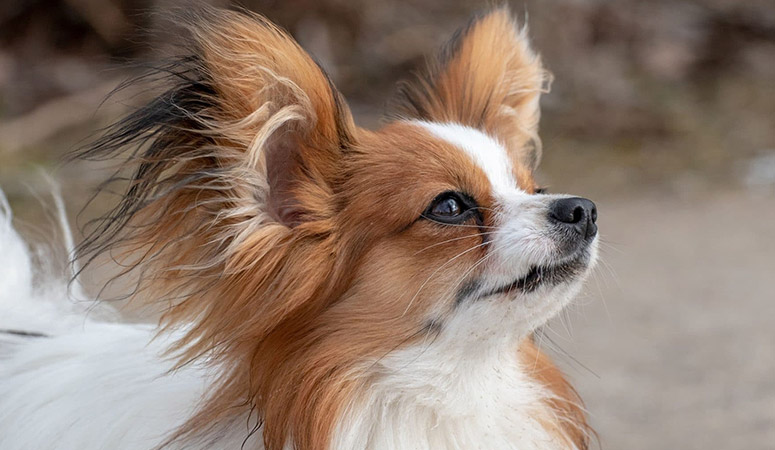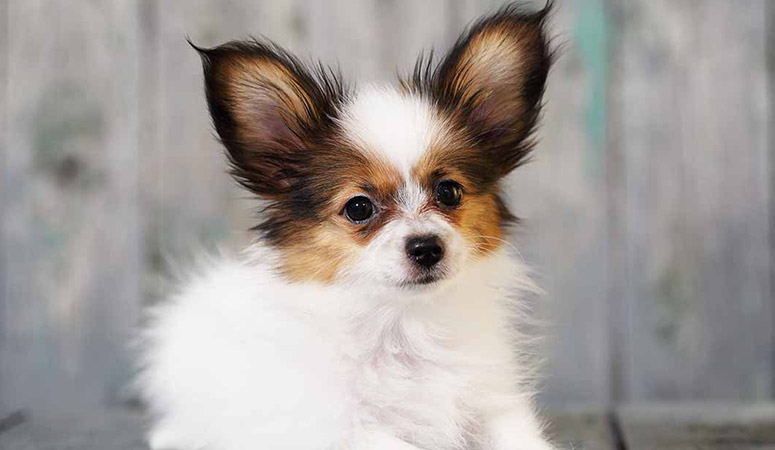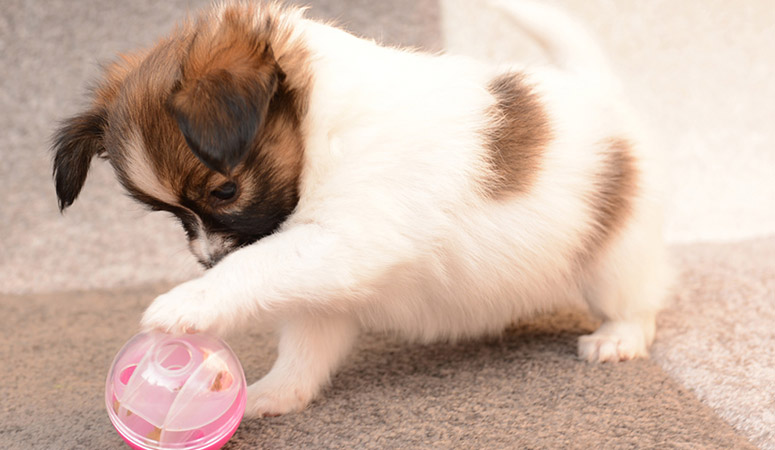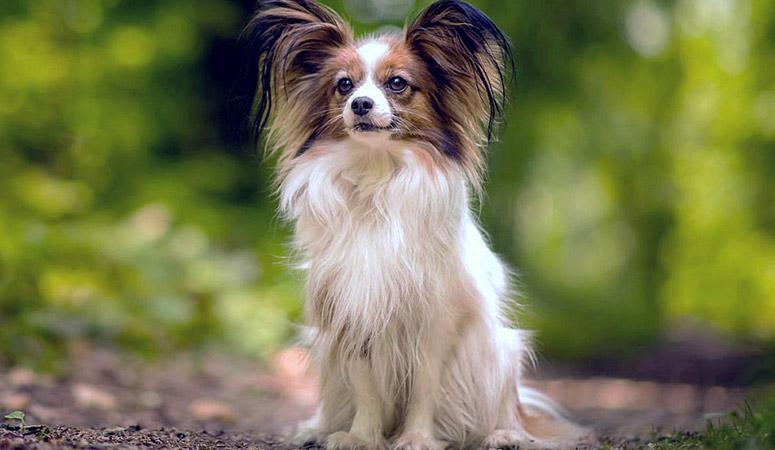Papillon
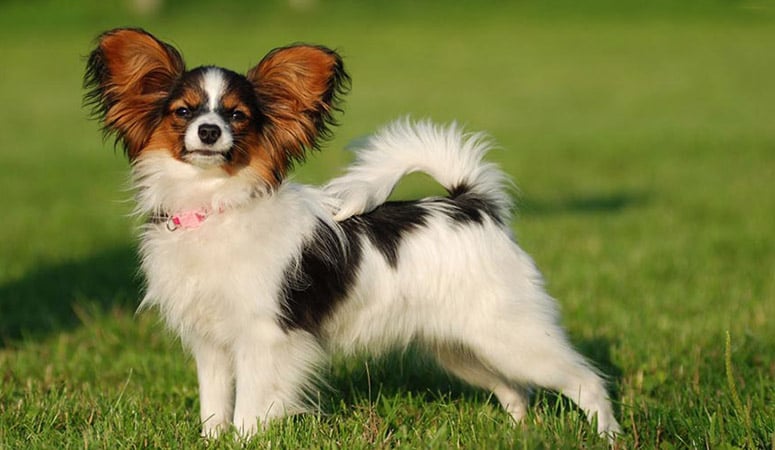
Friendly, intelligent, adventurous, Papillon is a toy group dog breed who earns its name from its butterfly-like look of the long and fringed hair on the ears. Papillon is energetic and is a good competitor in agility and obedience. They could get along with human and other pets if got socialized training from puppyhood.
| Other Names | Continental Toy Spaniel, epagneul Nain Continental, Phalene |
| Color | Black, Black and Tan, Brown, Red, Silver, White |
| Height | Males: 8-11 inches. Females: 8-11 inches. |
| Weight | Males: 5-11 pounds. Females: 5-11 pounds. |
| Life Span | 14-16 years |
| Personality | Friendly, Alert, Happy |
| Exercise | Regular Exercise |
| Origin |
| Popularity | #53 |
| Groom Needs | Weekly |
| Kids Friendly | Yes |
| Dog Friendly | Yes with supervision |
| Watch Dog | |
| Family Dog | |
| Litter Size | 2-4 |
Papillon Pictures
Papillon Video
Introduction
Also known as the Continental Toy Spaniel, the Papillon is one of the oldest toy spaniels in the world. A Phalene is the name given to a papillon with dropped ears and the word, which is French, translates to “moth”. Papillons are known to have a high level of intelligence which makes it easier for them to learn new tricks; they are also known to be self-assured. The papillon’s coat is long and silky and has a wide variety of coat colors; each with a unique AKC-given code with AKC-recognized markings which also have unique codes. The coat colors are black, brown and white; black, red and white; brown and white; fawn and white; red; red, white and sable; sable; white; white and black; white and lemon; white and liver; white and red; white and sable; white and silver; white, black and tan. Though there are a lot of coat colors, an all-white or a dog with no white on its coat is not seen as a papillon. The markings that go along with the coat colors are black markings, black mask, sable, and tan markings.
A male papillon stands between 8 to 11 inches (20-28 cm) at the shoulders and has a weight of 8-10 pounds (3.6-4.5 kg). A female papillon stands between 8 to 11 inches at the shoulders as well but has a different weight to that of a male papillon; weighing around 7-9 pounds (3.2-4.1 kg).
The lifespan of a papillon is 13-15 years. The papillon is known to be friendly to both children and strangers alike, though it is also known to be reserved around new faces. It is an energetic breed that has a high sense of alertness. The breed has two ear variations — there is the completely upright-eared papillon which is more common, and there exists, also, the dropping ears of the Phalene variety, which have been likened to their spaniel ancestors.
Living with Papillon
The Papillon has a long, single coat which needs little grooming and should be combed and brushed once or twice a week to distribute the natural skin oils and keep the hair and skin healthy. Grooming every month or so is fine. This dog breed doesn’t emit a doggie odor, and bath as needed.
As small dogs are prone to periodontal disease, owners need to brush their teeth two or three times a week, and daily brush is better to help promote gum health and keep bad breath at bay.
The Papillon’s nails grow quickly and should be trimmed regularly, especially the dewclaw could curl around and pierce the leg. If the dog does not wear the toenails down naturally outdoors, trim the nails once a month.
Papillons are active, smart dogs, don’t short-change your Papillon’s exercise simply because they’re small, they always want their owners to play with them. Evaluate your dog’s response to exercise and establish a challenging exercise program that it can handle.
Exercise a few short walks a day and play games in the house can keep a Papillon happy and healthy. Indoors, they enjoy retrieving a small ball or toy, a Papillon can learn to bring it back quickly and you can throw it again. Outdoors, as their nature, Papillons are happy to chase after chipmunks, squirrels, and even insects. When you take your Papillon to a dog park, keep your dog separate from other larger dogs. Besides, additional obedience training can provide him mental exercise.
Feeding a Papillon should depend on his weight, age, metabolism, build, and activity level. Generally, the Papillon requires a fourth to a half cup of food per day, divided into two meals.
Some dogs are easy to get overweight, so you need to watch their calorie consumption and weight level all the time. There should be clean fresh water at all times.
Treats may be an important aid in training, but excessive intake can lead to obesity. Also, owners need to distinguish which human food is safe for dogs and which are not. If you have any problems with your dog’s weight or diet, just consult from your veterinarian.
Papillons may be prone to the following conditions: Tracheal collapse, Sensitive to anesthesia, Patellar luxation, Hypoglycemia, Progressive retinal atrophy…
Major concerns: none
Minor concerns: seizures, dental problems, patellar luxation
Occasionally seen: PRA, allergies, intervertebral disk disease, vWD, open fontanel
Suggested tests:
Cardiac Exam
Patella Evaluation
Ophthalmologist Evaluation
Total Annual Cost: $2745
Cost is estimated for the first year and may vary depending on many factors, such as dog food, health care, leash, collar, licensing, possible fencing, crates, training and obedience classes, dog-walking, grooming, treats, toys, flea, tick, and heart-worm meds, microchips, etc.
Intelligent and eager to please, Papillons can learn obedience with ease. Generally speaking, most small dogs can be more difficult to housetrain than large breeds, but Papillons make the process easier.
Early socialization is very important, and obedience classes are a great option. Papillons would learn to do the commands from their owners, and owners should not overindulge them. Also, remember that the Papillon is a companion dog at heart, if it is left for long periods of time, they may be unhappy and develop undesirable behaviors. Beside, Papillons can get along well with other pets as well as humans.
Furthermore, Papillons can excel in dog sports such as agility or obedience competitions. And they could be bored with the basics, so conducting advanced training and competition is a good way to broaden their horizons and tire out their energy.
History
The history of the Papillon breed is closely connected with paintings. There is a painting of Queen Sophie Dorothea of Prussia with a Phalene, which was done in 1737 alongside other papillon paintings done at different times. Italy is where the earliest toy spaniels which resemble the papillon are found– an artist, Tiziano Vecelli, had included them in famous paintings from around 1500. In 1935, the AKC first recognized the papillon and the Papillon Club of America was then formed. The World Wars affected the club’s activities and it was closed, but in the year 1948, it was revived.
Helpful Information
Breed Club: PAPILLON CLUB OF AMERICA, INC.
Breed Club Link: https://www.papillonclub.org/
Breed Club Rescue: PapAdopters & Placement Service
Breed Club Rescue Link: http://papadopters.com/

